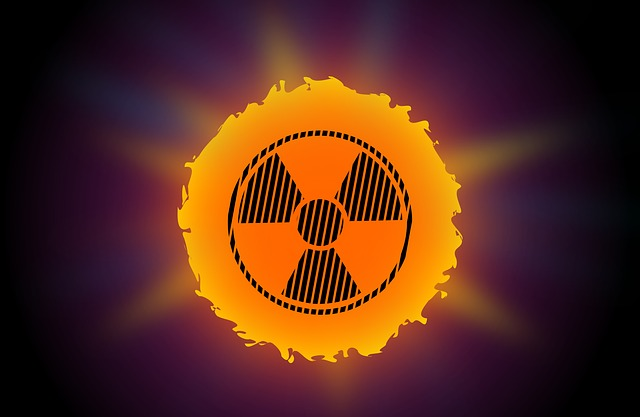Way to cool UV lights
HVAC UV Lights for AC Systems-Do They Work?
HVAC UV lights have gained significant attention as a potential solution for improving indoor air quality and reducing microbial contaminants in AC systems. But do these UV lights actually work? Let’s explore their effectiveness and benefits in AC systems.

UV lights installed within AC systems work by emitting UV-C radiation, typically at a wavelength of around 254 nanometers. This specific wavelength is highly effective in damaging the DNA and RNA of microorganisms, including bacteria, viruses, and mold spores. By disrupting their genetic material, UV lights can inhibit their ability to reproduce and survive.
The primary goal of using UV lights in AC systems is to eliminate or significantly reduce microbial growth on the cooling coils and other components within the system. These components can become a breeding ground for mold, bacteria, and other microorganisms when exposed to moisture and organic matter. The UV lights target these areas, sterilizing the surfaces and preventing further microbial growth.
However, the effectiveness of HVAC UV lights depends on several factors:
- Proper Installation: Correct placement and positioning of the UV lights are crucial for optimal effectiveness. The lights should be strategically positioned to ensure maximum exposure to the targeted areas, such as the cooling coils and drain pans.
- Maintenance and Cleaning: Regular maintenance and cleaning of the AC system are essential. UV lights can help inhibit microbial growth, but they are not a substitute for routine cleaning and maintenance. Dust, dirt, and debris can accumulate on surfaces over time, reducing the effectiveness of UV lights. Therefore, combining UV lights with regular cleaning practices is recommended.
- UV Light Intensity and Duration: The intensity and duration of UV light exposure play a significant role in its effectiveness. Sufficient UV-C intensity is required to ensure effective microbial disinfection. UV lamps should be replaced periodically according to the manufacturer’s recommendations to maintain optimal performance.

While HVAC UV lights can be an effective tool in reducing microbial contaminants in AC systems, they are not a standalone solution. They work best when used in conjunction with other preventive measures, such as proper filtration, moisture control, and regular system maintenance. Additionally, UV lights primarily target microbial growth on surfaces and may have a limited impact on airborne contaminants.
HVAC UV lights can be an effective addition to AC systems for reducing microbial growth and improving indoor air quality. However, their effectiveness relies on proper installation, regular maintenance, and adherence to recommended practices. Consulting with HVAC professionals and following manufacturer guidelines can help ensure the optimal performance of UV lights in AC systems.
Ultraviolet germicidal lamps can destroy bacteria, molds, yeast, and viruses
Ultraviolet (UV) germicidal lamps are widely recognized for their ability to destroy various microorganisms such as bacteria, molds, yeast, and viruses. These lamps emit UV-C light, which has a wavelength between 200 and 280 nanometers, known for its germicidal properties. When exposed to UV-C light, the DNA and RNA of microorganisms are disrupted, rendering them unable to reproduce and causing their death.
What Kind Of UV Light Kills Mold?
When it comes to mold eradication, specific types of UV light are more effective than others. UV-C light, with a wavelength of around 254 nanometers, is most commonly used to kill mold. This wavelength is highly efficient at disrupting the molecular structure of mold spores and preventing them from growing and spreading.
What is ultraviolet light?
Ultraviolet light refers to the electromagnetic radiation emitted by the sun or certain artificial light sources that fall in the UV spectrum. UV light is categorized into three types based on its wavelength: UV-A, UV-B, and UV-C. UV-A (315-400 nm) and UV-B (280-315 nm) are present in sunlight and can cause tanning, sunburns, and skin damage. On the other hand, UV-C (200-280 nm) is filtered by the Earth’s atmosphere and is commonly used for its germicidal properties.
Types of HVAC UV Lights
In the context of HVAC systems, various types of UV lights are employed to improve indoor air quality and eliminate mold and other microorganisms. The most common types of HVAC UV lights include coil sterilization units and air sterilization units.
- Coil Sterilization Units: These UV lights are installed near the evaporator coils of HVAC systems. They prevent the growth of mold and other microorganisms on the coils, which can circulate throughout the system and affect indoor air quality.
- Air Sterilization Units: Placed within the return air ducts, these UV lights disinfect the air as it passes through the HVAC system. They effectively kill mold spores, bacteria, and viruses present in the air, ensuring cleaner and healthier indoor air quality.
How Do You Use A UV Light To Kill Mold?
To use a UV light to kill mold, proper placement and installation are crucial. The UV light should be installed in the HVAC system or directly targeted at the mold-affected areas. Mold needs direct exposure to UV-C light for an extended period to be effectively killed. It’s important to note that UV lights should be used as part of a comprehensive mold remediation plan that also includes moisture control and thorough cleaning.
Is UV Light Effective in Killing Mold?
UV light has proven to be effective in killing mold, as long as it is used correctly and in conjunction with other mold prevention and remediation strategies. It can significantly reduce mold growth and improve indoor air quality. However, it’s important to consult professionals and ensure proper safety measures when using UV lights for mold eradication.
Stuart ™ handheld ultraviolet lamps
Stuart™ handheld ultraviolet lamps are a popular option for various applications, including mold detection and inspection. These portable UV lamps emit UV-A light, which can make certain types of mold fluoresce, aiding in the identification and assessment of mold growth.
UV germicidal lamp
UV germicidal lamps, including handheld and installed units, are valuable tools in combating mold, bacteria, yeast, and viruses. Their germicidal properties and ability to disrupt the DNA and RNA of microorganisms make them effective in improving indoor air quality and creating healthier living environments.
Questions about UV light
Does UV light kill mold smell?
UV light itself does not directly eliminate mold smell. The primary function of UV light on mold is to disrupt the DNA and RNA of mold spores, preventing their reproduction and growth. This helps in reducing the presence of mold in the environment. However, mold odor is caused by volatile organic compounds (VOCs) released by mold colonies, and UV light does not specifically target or neutralize these compounds. To effectively eliminate mold smell, it is essential to identify and address the underlying cause of mold growth, such as moisture issues or hidden mold sources, and conduct thorough remediation and cleaning.
Can you put UV lights in your home?
Yes, it is possible to install UV lights in your home. UV lights can be integrated into HVAC systems, and air purifiers, or used as standalone units. When properly installed and maintained, UV lights can help reduce microbial growth, including mold, bacteria, and viruses, in the indoor environment. However, it is important to consult with HVAC professionals or experienced installers to ensure appropriate placement and optimal effectiveness. UV lights should be installed and used according to manufacturer guidelines and safety precautions.
What does the UV light do in the house?
- In the context of residential applications, UV lights can serve several purposes in the house:
a. Improving Indoor Air Quality: UV lights installed in HVAC systems or air purifiers can help sterilize the air as it circulates through the system, reducing the presence of airborne microorganisms such as mold spores, bacteria, and viruses. This can result in cleaner and healthier indoor air.
b. Controlling Mold Growth: UV lights installed near cooling coils or in ductwork can help inhibit the growth of mold on these surfaces. By disrupting the DNA of mold spores, UV lights can prevent their reproduction and subsequent spread within the HVAC system, reducing the risk of mold-related issues.
c. Mold Detection and Inspection: UV lights, specifically those emitting UV-A light, can be used for mold detection and inspection purposes. Certain types of mold can fluoresce under UV light, making it easier to identify and locate areas of mold growth.
It is important to note that while UV lights can be beneficial in certain situations, they should be used as part of a comprehensive approach to mold prevention and remediation, including moisture control, proper ventilation, and regular cleaning.
UV lighting plays a crucial role in various applications, and two essential components in this domain are the UV bulb and UV lamp. These devices emit ultraviolet radiation, which has a wavelength shorter than visible light, making it ideal for disinfection, curing, and other specialized purposes. The UV bulb, housed within a UV lamp, contains mercury vapor that produces an intense UV light when energized. This light can effectively kill bacteria, viruses, and other microorganisms, making it a valuable tool in healthcare settings, water treatment facilities, and manufacturing industries. However, the intense UV light generated can also pose risks, requiring safety precautions such as shielding and protective eyewear. Additionally, UV lamps often incorporate a cooling coil to regulate the temperature and prevent overheating, ensuring optimal performance and longevity.

Recent Comments